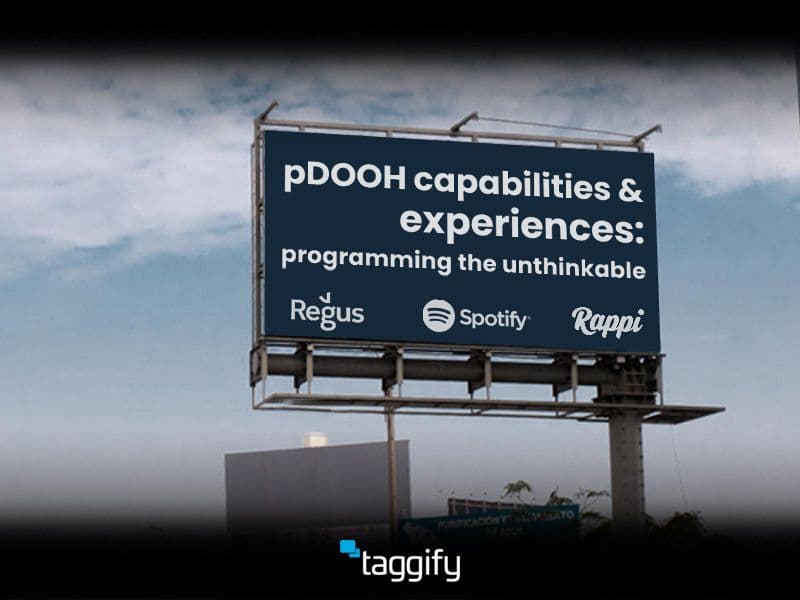pDOOH Capabilities & Experiences: programming the unthinkable
Market

Digital Out of Home (DOOH) advertising is quickly becoming one of the most effective ways to reach potential customers. As technology advances, so do the opportunities to reach customers in a more targeted and cost-effective manner. Programmatic capabilities are allowing businesses to make the most of their DOOH campaigns, being able to control factors that previously were unthinkable.
Last updated: December 6, 2022
Here are some advantages of using programmatic capabilities illustrated with real experiences carried out with Taggify to make a DOOH ad campaign:
1. Increased Reach: Programmatic capabilities allow for a higher reach for DOOH campaigns. It allows for ads to be targeted to specific locations, demographics, and even time of day. Rappi is an excellent example of this: the delivery and courier company developed a campaign in different stages for each moment of the day and the week, defining a circuit in which its targeting had a greater presence. This helped Rappi to ensure that the right audience is reached for each message and that the ads are seen when they are most likely to be effective, achieving 882,780 impacts (OTS) and 100% more CTR over standard.
2. Cost-Effectiveness: Programmatic capabilities are more cost-effective than traditional methods of buying DOOH ads. By using programmatic technology, businesses can purchase ads more quickly and at lower prices than they could with traditional methods and Regus proved this: global coworking company launch an international simultaneously campaign between Mexico and Argentina. This allows the important brand to get a better return on investment and maximize their budget, reaching more than 10.500.000 people from two countries through the same platform.
3. Improved Data Insights: Programmatic capabilities allow better data insights into the success of a DOOH campaign. This can help businesses like Spotify’s case to better understand their audience and optimize their campaigns. The music streaming company aimed a targeting young people of 18 to 25 in a constant bussy area. Thanks to metrics and demographic measurements, a specific time slot was defined in which there was a greater presence of the intended audience. This can help businesses like Spotify’s case to better understand their audience and optimize their campaigns. The music streaming company aimed a targeting young people of 18 to 25 in a constant bussy area.
